
Air Curtains
Air Curtains are installed over operational doors and pass-thru windows providing protection from windborne dust, dirt, fumes, flying insects and extreme outside temperature conditions. Air curtains improve the inside sanitation level of a building while reducing the operational energy costs necessary to heat and cool it.

Air Cooled Chillers
Cooling towers are heat removal devices used to transfer processed waste heat to the atmosphere. Cooling towers may either use the evaporation of water to remove processed heat and cool the working fluid to near the wet-bulb air temperature or may rely solely on air. Common applications include cooling the circulating water used in oil refineries, chemical plants, power stations, and building cooling.
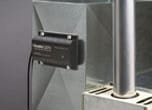
Air Purification
Commercial grade air purifiers are manufactured as both a small stand-alone unit and as larger units that can be affixed to an air handler unit (AHU) or to an HVAC unit found in the medical, industrial, and commercial industries.
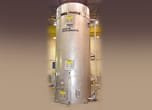
Air Strippers
Air strippers remove volatile gaseous compounds dissolved in a contaminated water stream. Clean water from the stripper may be sent to a sump or drain as required. Monroe manufactures both packed Tower Air Strippers (shown) and low profile Sieve Tray Air Strippers.

Automatic Air Vents
Vents with motor-driven louvers. Can be actuated electronically or via pressure valve. Available in many sizes and configurations.
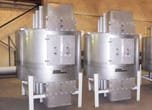
Carbon Absorbers
Carbon Absorbers come in models designed for both physical and chemical adsorption of gas-phase pollutants. Adsorption involves the adhesion of pollutant gas molecules to porous solid surfaces that the contaminated air stream passes through. Physical adsorption relies on intermolecular forces while chemical adsorption involves the formation of chemical bonds. Activated Carbon Absorbers are highly efficient for removal of oil vapors, H2S and other odors, VOCs and gas phase hydrocarbons.
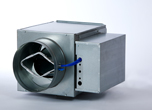
Air Terminals
Air terminal units are small air handlers designed for local use and may only include an air filter, coil, and blower. These simple terminal units are called “blower coils” or “fan-coil units.” Makeup air units are larger air terminals that condition 100 percent outside air (and no re-circulated air). Air handlers designed for outdoor use, typically mounted on rooftops, is known as a “packaged unit” (PU) or “rooftop unit” (RTU).
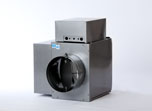
Air Handling Units
An air handling unit (AHU), conditions and circulates air as part of a heating, ventilating, and air-conditioning (HVAC) system. A typical air handler is a large metal box containing a blower, heating and/or cooling elements filter racks or chambers, sound attenuators, and dampers. Air handlers connect to ductwork that distributes the conditioned air throughout the building and returns it to the AHU. AHUs can
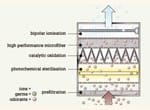
Air Purification System
A
A combination of photo-oxidation and

Air Lonization System
Ionization units generate clean, healthy, fresh air by the inactivation of germs and odor molecules through oxidation or “activated oxygen.” Outdoors, activated oxygen primarily occurs in the form of positive and negative air ions and ozone. Indoors, on the other hand, air ions rarely occur. Air ionization systems “copy” the natural process of air regeneration improving indoor air quality.
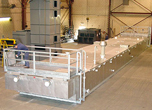
API Oil/Water Separators
Monroe custom oil/water separators are designed per American Petroleum Institute standards (API) for above and below ground installations. The basic components include an inlet section with diffusion wall, separator channel, an oil retention baffle

Boiler & Boiler room equiments
Can be used in stationary applications to provide heat, hot water, or steam for domestic use, or in generators.
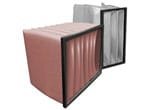
Chemical filters
A chemical air filter consists of an absorbent or catalyst for the removal of airborne molecular contaminants such as volatile organic compounds or ozone. Air filters are used in applications where air quality is important, notably in building ventilation systems.
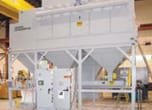
Dust Collectors
Cartridge style dust collectors are designed to provide continuous dust collection and removal of airborne dust produced by manufacturing and processing operations at 99+% efficiency on many installations. The modular design incorporates high efficiency, pleated cartridge filters to achieve maximum filter surface area in a relatively small housing. Cartridge cleaning is accomplished by reverse compressed air pulses through a few cartridges at a time, allowing continuous operation without shut-down.
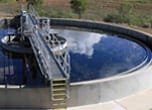
Circular Clarifiers
Circular Clarifiers are used for water treatment by removing undesirable chemicals, materials, and biological contaminants from contaminated water. Circular clarifiers can incorporate center or peripheral feeds. Center column supported clarifiers are available in diameters to 200 feet or more. Bridge supported clarifiers of 100 feet or more require a specially-engineered truss bridge. Circular clarifiers are available as primary, secondary, thickeners and solid-contact clarifiers.
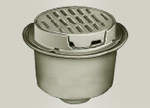
Drains
Available in hundreds of configurations and sizes. Allows for chemical, oil, air, and particle separation. Many materials are available from PVC to stainless steel.
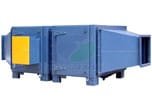
Electrostatic precipitators
An electrostatic precipitator (ESP), or electrostatic air cleaner is a particulate collection device that removes particles from a flowing gas (such as air) using the force of an induced electrostatic charge. Electrostatic precipitators are highly efficient filtration devices that minimally impede the flow of gases through the device, and can easily remove fine particulate matter such as dust and smoke from the air stream.
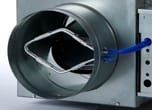
Electric duct heaters
Mounted inline in an HVAC system. These heat air as it passes over an electrically heated coil. Can be actuated remotely via BMS or locally via temperature sensor.
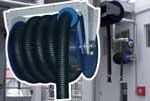
Direct Exhaust Extraction System
Direct Exhaust Extraction Systems are used by automotive repair shops to remove harmful carbon monoxide exhaust from the building while working on running vehicles. The systems utilize a hose, either spring loaded or motorized that attaches to the vehicles exhaust pipe and send the exhaust to a filtering unit to remove harmful emissions.
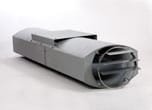
Exhaust & supply fans
Fundamental to HVAC systems. Built-to-suit applications can be supplied in a timely fashion from roof mounted dome fans to jet fans used in roadway tunnels.

Cooling Tower
Cooling towers are heat removal devices used to transfer process waste heat to the atmosphere. Cooling towers may either use the evaporation of water to remove process heat and cool the working fluid to near the wet-bulb air temperature or, in the cased of closed circuit dry cooling towers, rely solely on air to cool the working fluid to near dry-bulb air temperature.
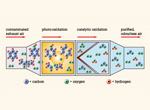
Exhaust Cleaning Systems
Waste air purification systems combine photo-oxidation and catalytic oxidation for removal of pollutants, odors and solvents. The waste air purification process is based on a technology that induces photo-oxidizing reactions to remove organic solvents and odorous substances using UVC light as the driving force in this process. A catalytic converter further increases the effectiveness of the oxidation reactions.
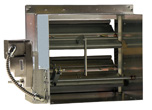
Fire & smoke dampers
Dampers are designed to prevent fire and smoke from spreading from a fire source through the ventilation system and into other parts of the building. Depending on their application, fire dampers have different fire-resistance classes (called “fire-duration ratings”) and can be installed in concrete or masonry walls and in lightweight partition walls.
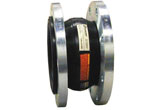
Flexible connectors
Because of their flexibility, flexible connectors excel in shock and anti-vibration applications. They can create a gasket-like seal for harsh environments. Available in many sizes, types, and configurations.
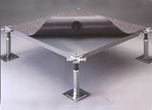
Floating floors
Used for under-floor HVAC ducting and electrical needs required in today’s most building projects.
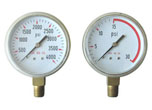
Gauges & thermometers, actuators
Analog and digital monitoring equipment for use in many applications from HVAC to water movement and control.
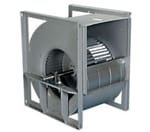
Industrial blowers
Industrial blowers are primarily used to exhaust foul air and replace it with fresh outside air. They are typically used for high volume, high static pressure applications to provide general ventilation in heavy-duty commercial and industrial applications including factories, warehouses, gymnasiums, underground parking garages, etc.

Humidifiers
For buildings with a forced-air furnace, a humidifier may be built right into a furnace. Humidified air can protect wooden objects and other sensitive furnishings which may be damaged by overly-dry air. In colder months, humidifiers provide substantial energy savings as occupants feel warm at a lower temperature with humidified air.
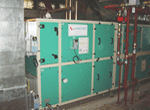
Hygenic air-handling units
Hygienic air-handling units provide clean, conditioned air for clean rooms, operating rooms, laboratories and pharmaceutical and electronic facilities. These units are manufactured in conformity with stringent standards and guidelines.

Grilles, Registers, Diffusers, Louvers
Grilles, registers, diffusers and louvers are the esthetically-functional face of an HVAC system. They are available in an unlimited array of sizes, colors, controls, and configurations and can be custom-designed to suit any project. Along with standard units, specialized units are available for security and fire prevention applications, and designed with special filters for use in hospitals and laboratories.

Kitchen Ventilation Systems
Range vent hoods are mounted to the ceiling or wall above a stovetop cooking surface. They are typically big enough to encompass the perimeter of the stovetop surface. A hood will be made of metal, and may either be hammered, painted, enameled or otherwise finished to match the design of the kitchen.
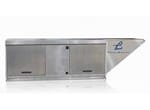
Make-Up Air Systems
Direct-Fired make-Up Air Systems are widely used in kitchen and food-service operations to replace stale or foul exhaust air with fresh and clean outside air. Models are provided in capacities from 800 to 14,000 CFM with 100% fresh air heated by either natural of LP gas.
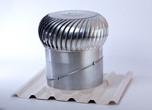
Natural ventilators
Natural ventilation is the process of supplying and removing air through an indoor space by natural means. There are two types of natural ventilation occurring in buildings: wind driven ventilation and stack ventilation.
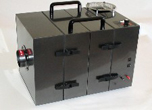
NBC filters
Nuclear, biological, and chemical air filters.
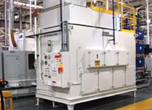
Oil Mist Collectors
Oil mist collectors are designed to collect and remove airborne oil mist, smoke and sub-micron vapors generated by operations such as high production machining and cold forming. It is a multiple stage collector that has proven capabilities exceeding 99% efficiency on many installations.
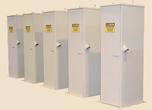
Oil Skimmers
Oil skimmers are heavily constructed for industrial applications and consist of an endless belt, an electric motor and drive unit and a complete enclosure. The belt is suspended from a pulley with the lower portion immersed in an oil supporting liquid. As the belt decends into the liquid, the floating oil adheres to both sides of the belt. Self-adjusting wipers mounted in a staggered position wipe the oil from the belt. The recovered oil drains into a trough for deposit into a storage tank.
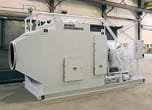
Packed Bed Scrubbers
Packed Bed Scrubbers are wet type scrubbers that remove soluble chemicals, fumes and odors. Contaminated gas flows through a specially-designed packing media that is wetted with re-circulated liquid. The liquid solvent absorbs the gas pollutant by physical or chemical means. A blow down from the tank with makeup water addition removes contaminant products before they precipitate.
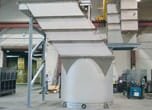
Parallel Plate Clarifiers
Parallel plate clarifiers have a small footprint and low space requirements and are often favored for certain applications such as dissolved metals removal. Vertical or horizontal models are available and can be incorporated with sludge thickening or oil skimming capability. Particulate settles onto the plates and slides down to the clarifier bottom. The liquid then flows into effluent channels and out of the clarifier.

Plate and Tube Settlers
Parallel plate and tube settlers are for use with clarifiers and sedimentation basins in rectangular or circular configurations. The flow in the settling zone is directed through inclined tubes or inclined parallel plates. This virtually eliminates unstable flow patterns and mixing currents which greatly inhibit the settling of solids. The inclined surfaces of the tubes or plates reduce the distance that particles need to travel before settling.
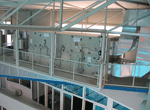
Pool air-handling unit
A pool air-handling unit is specifically designed to condition air in indoor areas with high humidity, such as indoor swimming pools.
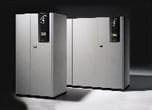
Precision air conditioning units
Precision air conditioning units are designed to run non-stop maintaining avery close control on environmental conditions such as temperature and humidity.
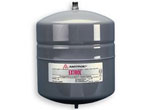
Storage & expansion tanks
Storage tanks accumulate and store collected matter. The size of an expansion tank depends on the system pressure, collector area, system volume, and static height of the system

Temperature & pressure relief valves
This safety valve releases water (thus relieving pressure) if either the temperature or pressure in a tank gets too high.
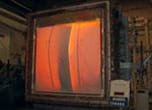
Smoke and fire curtains
The use of automatic smoke curtains has grown over the last few years as fire engineered solutions have become more complex and architectural demands have placed greater demand on fire strategies. Automatic smoke curtains can be manufactured to provide an unobtrusive and aesthetically neutral solution to compartmentation issues throughout the most complex of buildings.
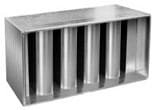
Sound attenuators
Sound attenuators (silencers) are used in HVAC systems to help absorb noise that is generated by fans or other air moving equipment.

Pumps
Pumps are used to move gases, liquids, or slurries. A pump displaces a volume by physical or mechanical action. Pumps fall into two major groups: positive displacement and rot dynamic.
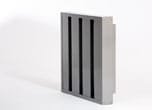
Sand trap louvers
Sand trap louvers aid in the operation of dampers manually or motor operated from the back of the louver. STLs are designed to separate debris from the air stream. STLs are generally used for ventilation applications and at the inlet duct of air handling units.
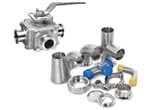
Valves & fittings
Valves may be operated manually, either by a hand wheel, lever or pedal. Valves may also be automatic, driven by changes in pressure, temperature or flow. These changes may act upon a diaphram or a piston which in turn activates the valve, examples of this type of valve found commonly are safety valves fitted to hot water systems or steam boilers.

Variable air volume boxes
A VAV terminal unit, often called a VAV box, is a zone-level flow control device. It is a calibrated air damper with an automatic actuator. The VAV terminal unit is connected to either a local or a central control system. Historically, pneumatic control was commonplace, but electronic direct digital control systems are popular especially for mid-to-large size applications. Hybrid control, for example having pneumatic actuators with digital data collection, is popular as well.
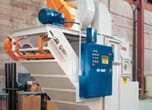
Venturi Scrubbers
Venturi Scrubbers are designed to remove both heavy and light airborne particulate matter from industrial exhaust systems, as well as flue and process gasses. Monroe units are completely self contained and need only be connected to normal plant electrical, water and air systems. Units can be equipped with drag conveyors to remove heavy, settled particulate and oil recovery units to remove accumulated oil.
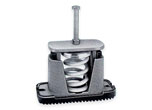
Vibration isolators & noise control
Passive vibration isolation systems consist essentially of a mass-spring-damper system. Isolating devices reflect and absorb waves of oscillatory energy extending from a working gear or piece of electrical equipment with the aid of effect of vibration insulation. Isolators are available in a wide range of sizes and configurations.
